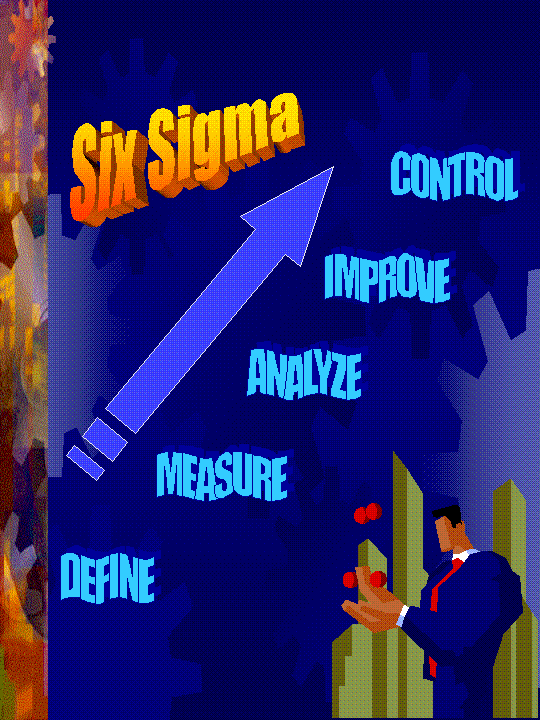- True Good To Be True?
- Fundamental Concepts In Six Sigma
- Employee Roles In Six Sigma
- The Downside To Six Sigma
- Conclusions
- Six Sigma Links
Back to Quality Strategies Main Menu
Six sigma is a relatively new quality process, which aims to effectively have zero waste in an organisation (or 99.99966% as the definitions of six sigma suggest).
Seems to good to be true?, well General Electric invested over $450 Million on six sigma projects in 1998 with an anticipated return of $1.2 Billion. Motorola predicted that over a five year phase of six sigma implementation, the company saved $11 billion.
Six sigma is currently receiving rave reviews across both sides of the Atlantic. In this section we will examine what six sigma is all about.
Although the origins of six sigma can be placed as far back as the 1970's. One of the most earliest true exponents of six sigma comes from Motorola in the 1980's. Other exponents of six sigma have included Scientific-Atlanta Inc, Texas Instruments, ABB, Allied Signal Inc, and a whole host of companies from industries such as electronics, aero-space and car manufacture.
FUNDAMENTAL CONCEPTS IN SIX SIGMA
These concepts of six sigma are based upon the General Electric model of six sigma:
DEFINE - A project team will be set up to tackle a quality issue, it will be based on business and/or customer needs. During this stage a list of 'Critical to Quality Characteristics' (CTQs) are drawn up which are based upon what your internal/external customers believe are important to quality. The best ones to look at are usually termed as the 'Big Y' the customers highest priority.
MEASURE - From definition of CTQs, the next step is to look at processes which affect CTQs. For instance if one of your CTQs is to look at customer returns based on damaged packaging, then obviously you would measure the effectiveness of your packaging process.
ANALYZE - From looking at the processes which affect the CTQs the next step is to analyze which factors are causing your processes to vary in quality. In our example it could be that one packaging team may be using a different method to pack the products.
IMPROVE - The project team from measuring and analyzing the CTQs should now be in a position quantify maximum and minimum ranges for acceptable performance. Further definitions include using 'vital few versus the trivial many' which processes will be the most effective?. In the case of packaging example it could include precise procedures for packing the products.
CONTROL - The control function would include monitoring the improvements which have been put into place.

EMPLOYEE ROLES IN THE SIX SIGMA
Implementing a six sigma process in your business will entail the use of new phrases to describe the people involved in the six sigma process, the names are:
MASTER BLACK BELT/CHAMPION - The highest trained individuals in the business. The master black belts will be the people in your business who influence quality control at the highest board room level.
BLACK BELT - Highly trained individuals who lead others namely the 'Green Belts'. Black belts will require tem leadership and project management skills. These individuals could be anyone in the business prepared to lead the improvement teams. In America there are a lot of consultancy firms which have special training sessions to train individuals on the fundamentals of the six sigma (define, measures, analyze, etc). There can be some complex equations that may have to be learnt. Generally speaking the black belts would be engineers within the business.
GREEN BELTS - These in essence will be the employees in the team which go out and observe the processes which require changing and collate the data.
The biggest pitfall to six sigma is the attributable cost, and time span required to set the teams up and allow them to focus on different areas of the business.
Motorola's six sigma program took a full five years before it started to reap any rewards. Do not expect six sigma to generate rewards overnight.
Six sigma can prove to be a valuable method for attaining improved quality of products with a reduction in waste for a lot of manufacturing firms.
But where your business is based on attaining rapid movements in innovation and speed of delivery it may not be as effective.
Six sigma is a long process of control, it will taking a look at the entire operation of a business, do not expect the process to bring rapid reductions and improvements, everything is going to take time to analyze, but the long term results will be immense!.
Back to The Quality Strategies Main Menu